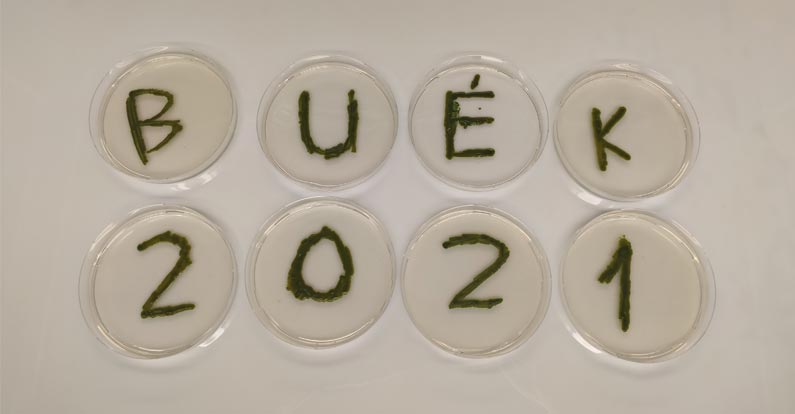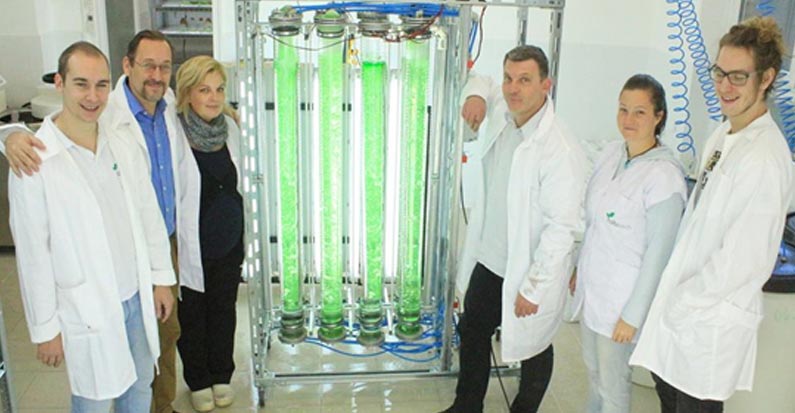Citokinin production by Scenedesmus obtusiusculus/rubescens under different culture conditions
Erika Greipel, Zsuzsanna Bencsik, Péter Futó, József Kutasi
Albitech Biotechnology Ltd., H-1045, Berlini út 47-49
Abstract
Numerous scientific studies have been published about algal cultures or extracts containing different types of plant hormones and their effect on plant growth and stimulation of germination. More groups of phytohormones are known such as auxins, citokinins, gibberellins, abscisic acid and ethilene. The most of naturally occurring cytokinins in plants are N6-substituted adenine derivatives generally with isoprenoid or aromatic side chain. (García de Salamon et. al. 2001) In case of plants and bacteria these are normally formed as free base, ribotide, riboside, glucoside and amino acid conjugate and have purine skeleton. This group includes zeatin, trans-zeatin riboside, and the rarely found in nature, artificially prepared kinetin. In higher plants commonly occur zeatin, and isopentenyl adenine riboside. From both of green micro and macroalgae for example Protococcus, Scenedemus and Chlorella species already was detected kinetin and zeatin riboside as well, in the latter case the presence of the cis-isomer was characterized. (Tarakhovskaya 2006) The kinetin as the first molecule with cytokinin effect was isolated by Miller in 1954 and it’s name was given after the ability to promote cell division. It is present in the natural DNA as oxidatively generated mutation by spontaneous chemical reactions which appears after cutting as a free degradation product. In our study the contents cytokinin of different nitrogen and phosphorus containing media at various temperatures cultured Scenedesmus obtusiusculus / rubescens BEA (Banco Espanol de ALGAS) D01_12 unicellular green algae biomass was examined. The solvent extraction was carried out from lyophilized samples. Detection of citokinins was occured by thin layer chromatography after solvent extraction and vacuum evaporation. The quantitation was performed by HPLC-PDA method. The results were evaluated using Statistica software. The results show that trans-zeatin riboside and kinentin are also presented in various concentrations in conjunction with the nutrient composition and temperature changes.




